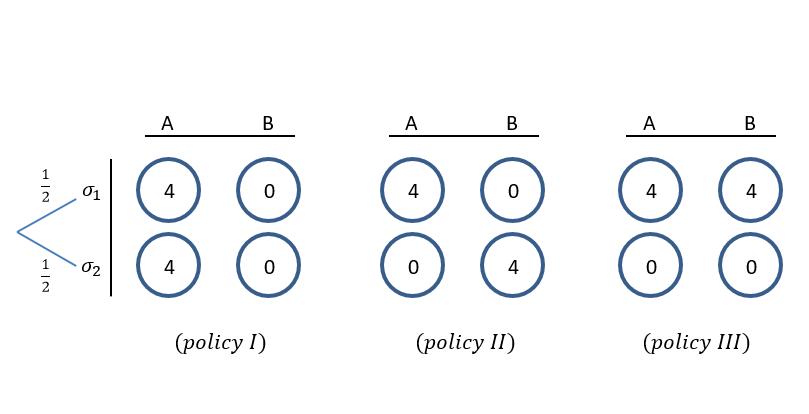The assessment of situations with risk is one of the most fascinating (open) questions in welfare economics.
Consider two identical individuals A and B. Each policy gives a state-specific income bonus.
How would you rank the following 3 policies? #econtwitter 1/4
Consider two identical individuals A and B. Each policy gives a state-specific income bonus.
How would you rank the following 3 policies? #econtwitter 1/4
Policy I gives +4 for sure to A, but nothing to B.
Policy II gives A and B the same chance at the bonus, but creates inequality for sure.
Policy III gives A and B the same chance and creates no inequality, but imposes aggregate risk.
2/4
Policy II gives A and B the same chance at the bonus, but creates inequality for sure.
Policy III gives A and B the same chance and creates no inequality, but imposes aggregate risk.
2/4
On the claimed superiority of I over II, see Diamond (1967, JPE, 2 pages!).
On the claimed superiority of III over II, see Broome (1984).
On the inconsistency of these views for rational and Paretian #welfarecriteria, see @mfleurbaey (2010, JPE).
So, the winner is?
3/4
On the claimed superiority of III over II, see Broome (1984).
On the inconsistency of these views for rational and Paretian #welfarecriteria, see @mfleurbaey (2010, JPE).
So, the winner is?
3/4
NONE!
Economists rely almost exclusively on expected utilitarianism, which (under very mild assumptions) rank these 3 policies equally.
With the incoming 2021, I wish more discussion about the normative views we impose (without warning) when making policy recommendations! 4/4
Economists rely almost exclusively on expected utilitarianism, which (under very mild assumptions) rank these 3 policies equally.
With the incoming 2021, I wish more discussion about the normative views we impose (without warning) when making policy recommendations! 4/4

 Read on Twitter
Read on Twitter


